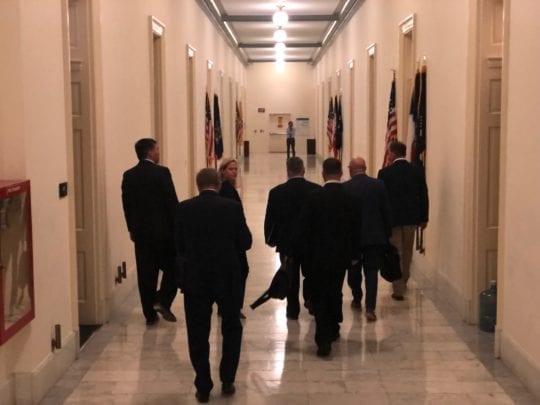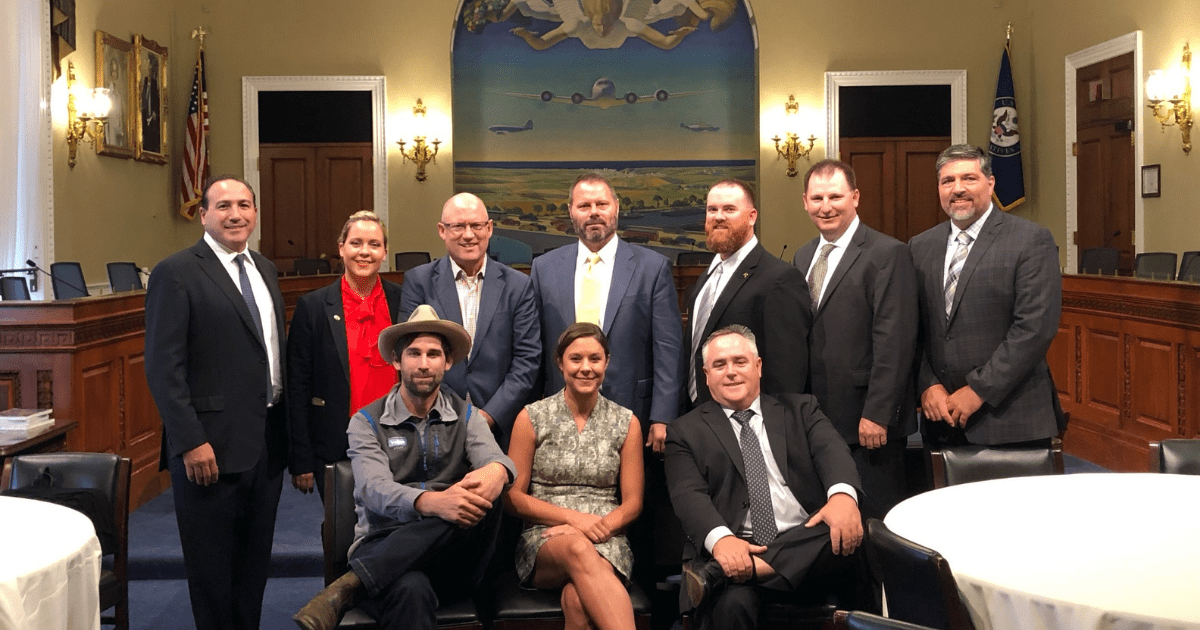Field Notes: Dr. Katz goes to Washington
It’s right there in the name: California Trout. We are, and will always be, focused on protecting and preserving the fish and rivers of the Golden State. Usually, that means I work in Sacramento. But as the scope and ambition of CalTrout’s floodplain work in the Central Valley have grown to encompass landscape-scale updates to water systems, so has the need to work not just with the State but also with the Federal agencies that operate, permit and fund levees, canals and dams.
So for the first time, this September, I headed back to D.C. Fortunately, I didn’t have to go alone. Accompanying me were members of our Reactivating Our Floodplains coalition, which has grown up around the concept that working floodplain farms can grow food for people in summer, while in winter they can provide critical habitat for birds, fish and wildlife.

Members of our Reactivating Our Floodplains coalition headed to their meetings with Senator Diane Feinstein and other congressional representatives. Photo: Jacob Katz.
Farms, Fins, and Feathers
The coalition brings together farmers, water districts, and flood control agencies as well as bird, fish and wildlife conservation organizations like Audubon California, Ducks Unlimited, Northern California Water Association, Reclamation District 108, Lundberg Farms, Conaway Ranch, and River Garden Farms. Together we walked the halls of Congress, the Senate and the Capitol. Every time we sat down with California’s Congress Members, they expressed surprise to find a delegation of folks working together who would normally only meet in courtrooms on opposite sides of the question. Congressional leaders were astounded to find us together in their offices, agreeing on a new way forward.
In California water, everyone always expects a fight. The power of this work is to bring people together around common ground. Maybe 20% of what we discuss we may never agree on. But we were there to work on what we have in common.
 As we have worked shoulder to shoulder out in the floodplain mud we’ve learned we can look past our differences to concentrate on the 80% where we do agree. And what we all recognize is that a critical part of the solution to get us to functioning rivers, robust fish populations and improved water security for both farms and cities are going to be cultivating these landscape-scale ecological solutions on the valley’s working agricultural lands.
As we have worked shoulder to shoulder out in the floodplain mud we’ve learned we can look past our differences to concentrate on the 80% where we do agree. And what we all recognize is that a critical part of the solution to get us to functioning rivers, robust fish populations and improved water security for both farms and cities are going to be cultivating these landscape-scale ecological solutions on the valley’s working agricultural lands.
In DC we showed a film The New Way Forward about this work to a packed room in the Congressional Subcommittee for Water, Oceans and Wildlife. Here is a link to the entire film. Please check it out.
Best fishes,
Jacob Katz





